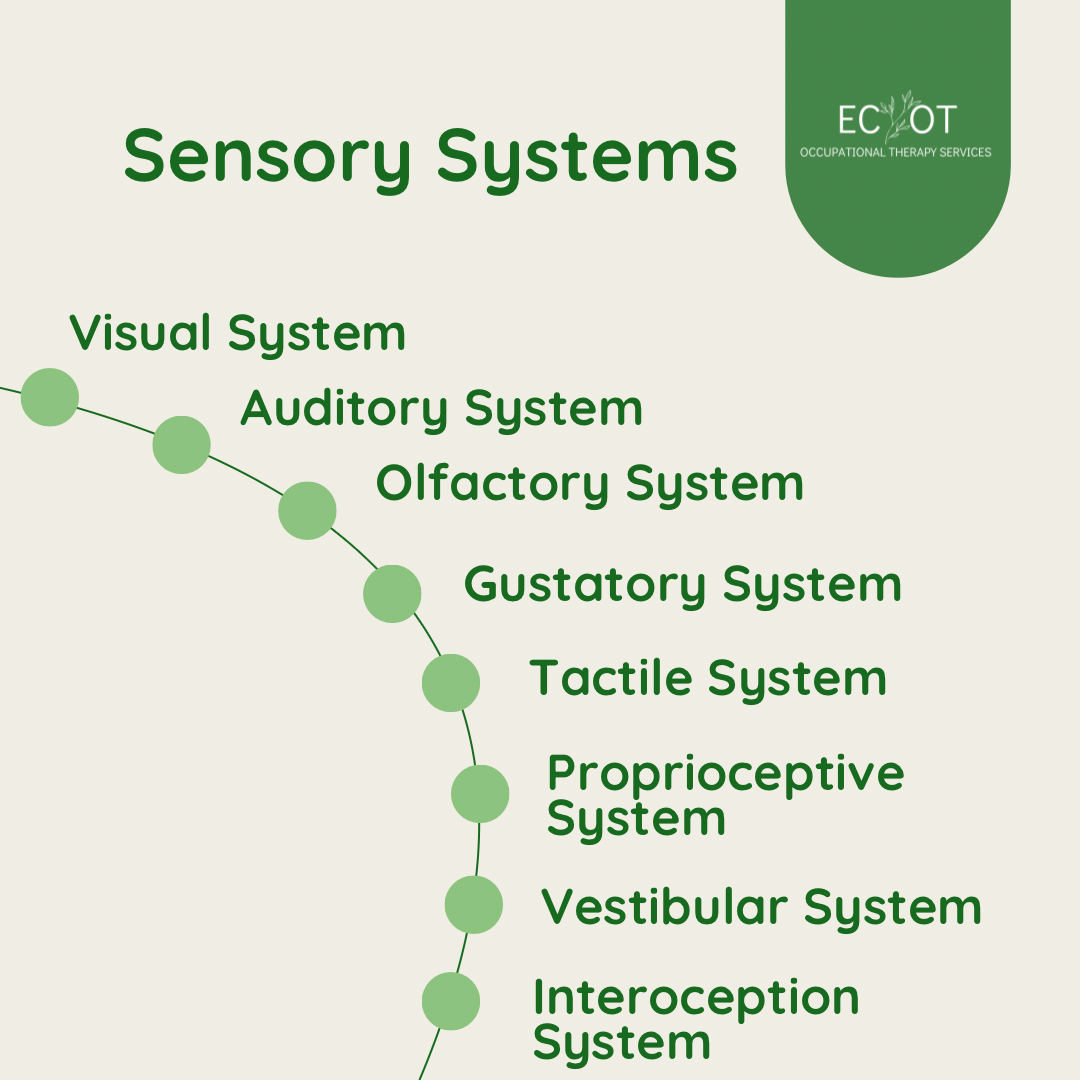Visual System
Our next stop in exploring the sensory systems is the visual system—our sense of sight.
The visual system takes in light through the eyes and processes that information in the brain. This is what helps us make sense of the world around us—recognizing shapes, colors, movement, distances, and contrast. For most children, this system works in the background without much thought, but for some, visual input can feel overwhelming, underwhelming, or simply hard to process.
Signs Your Child May Have Visual Processing Needs
Every child experiences the world differently, but here are some behaviors you may notice if your child has unique visual needs
Sensitivity to visual input (over-responsive):
Covers eyes when moving between light conditions (e.g., sunlight, fluorescent lights)
Becomes upset or overwhelmed in brightly lit spaces or visually busy environments (e.g., colorful walls, crowded bulletin boards)
Seeking more visual input (under-responsive/seeking):
Holds objects or fingers close to their eyes
Stares at bright lights, spinning toys, or reflections
Shows fascination with moving objects, like car wheels
Low registration of visual input:
Struggles to find items in cluttered spaces (e.g., shoes in a messy hallway)
Doesn’t always notice classroom visuals or cues
Avoidance behaviors:
Has difficulty focusing in visually stimulating environments, such as busy classrooms
Appears distressed by bright lights but doesn’t leave the space
It’s important to remember: no two children are alike. Many kids naturally develop strategies to meet their own sensory needs, and that’s perfectly okay. Concern usually arises when those needs make daily life or participation in routines more difficult.
Supporting Visual Needs at Home
If you suspect your child may have visual processing challenges, here are some simple strategies you can try:
For children who are over-responsive (sensitive):
Offer sunglasses, hats, or a sunshade in the car to reduce glare
Minimize visual clutter by using muted colors, limiting wall decorations to essential visuals, and organizing toys into clearly labeled bins
For children who are under-responsive or seeking more visual input:
Provide toys with extra visual interest, such as lava lamps, mirrors, light-up toys, or spinning objects
Add brightly colored visuals to their environment (e.g., alphabet letters in bold colors)
Use high-contrast materials, such as black font on brightly colored paper, to make visuals stand out
At EC Occupational Therapy, we know that every child’s sensory profile is unique. If you have questions about your child’s visual system—or any sensory need—don’t hesitate to reach out. Together, we can find strategies that help your child feel comfortable, confident, and ready to thrive in their daily life.

